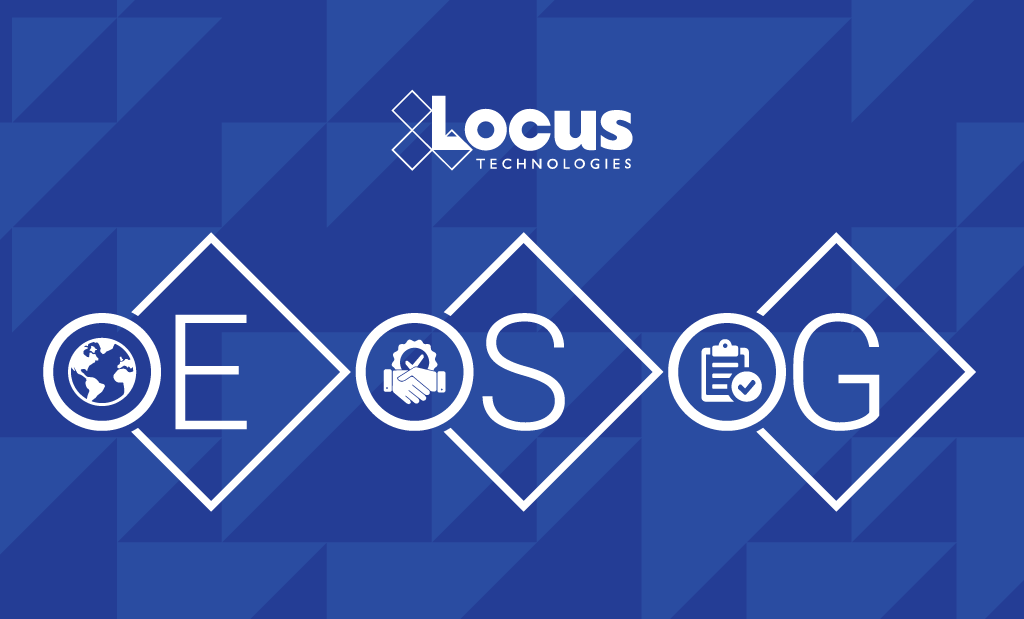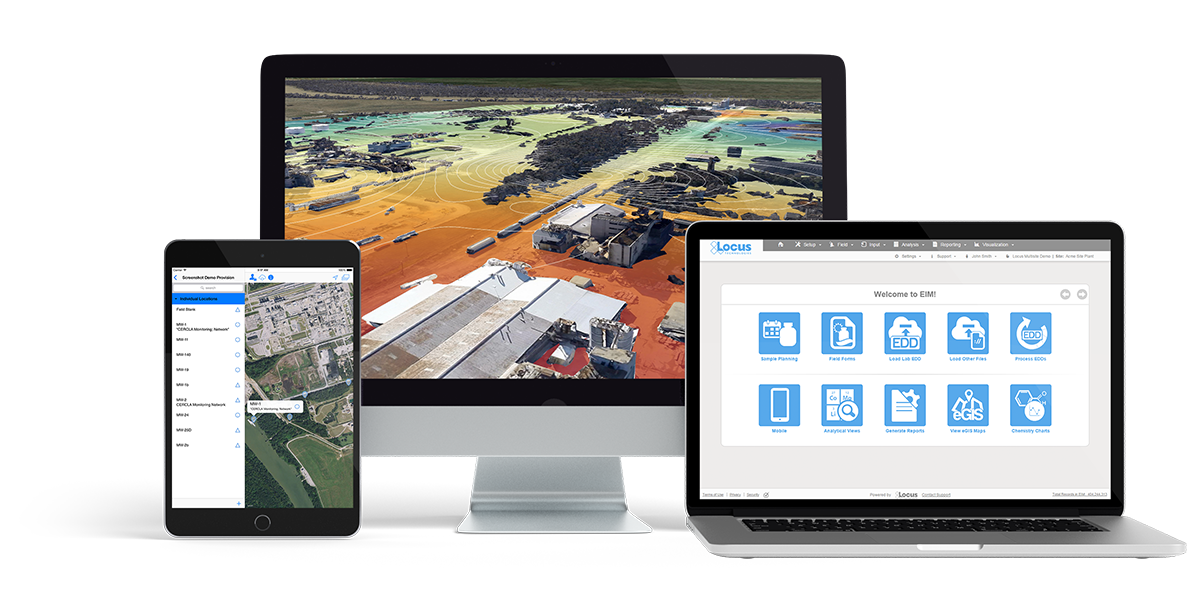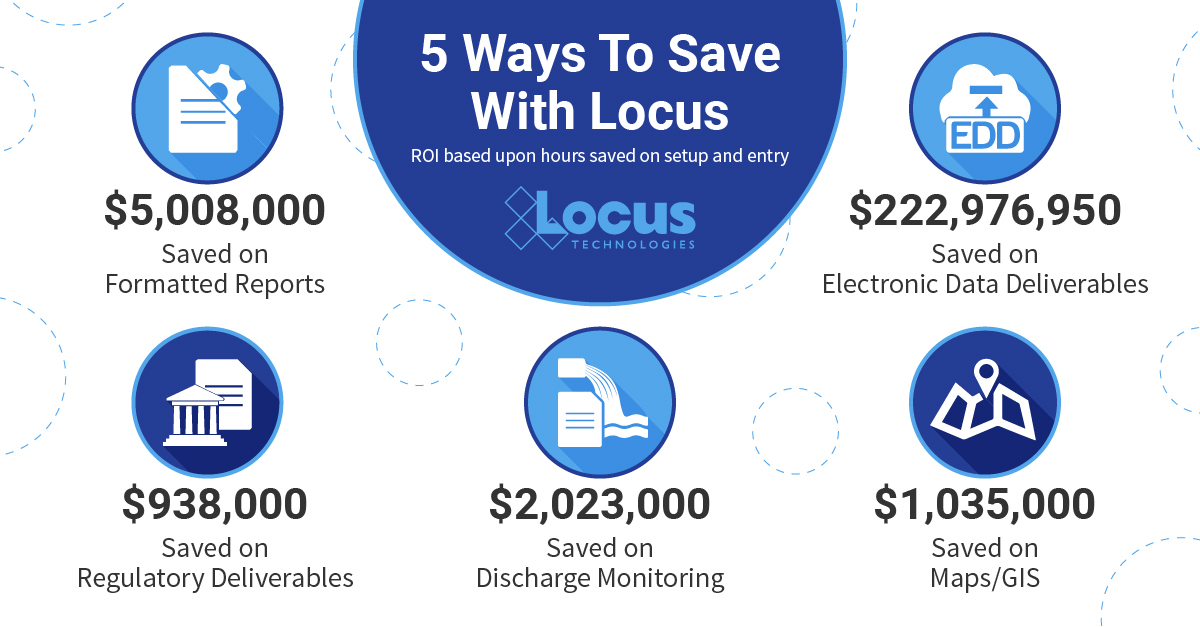Changes to the LCFS Regulation Brings a New Urgency for Biogas Developers Seeking Worthwhile Return on Investment
Changes to the LCFS Regulation Brings a New Urgency for Biogas Developers Seeking Worthwhile Return on Investment.
Changes to the LCFS Regulation Brings a New Urgency for Biogas Developers Seeking Worthwhile Return on Investment.
When looking for a GHG reporting program, there is one element that is typically overlooked. This short video gives us more insight.
One of the biggest recent trends we have seen with novice ESG providers (both startups and major software providers new to the field) is a lack of substantial software tools presented. What is lacking is covered up by grandiose statements about the efficacy of their options. These statements are so vague that they could cover anything if you switched out references to ESG with any other nouns, since these providers don’t show their tools transparently.

When selecting an ESG software solution, don’t waste your time with something that either isn’t functional or doesn’t exist. More importantly, your software should have a long track record of usability and be backed by years of expertise. Locus ESG software is proven and is a vital part of the Port Authority of New York and New Jersey’s Clean Construction Program. It also helps Del Monte Foods meet their sustainability goals by improving analyzation and forecasting.
The Vapor Intrusion tools in Locus’ Environmental Information Management (EIM) software solve the problem of time-consuming monitoring, reporting, and mitigation by automating data assembly, calculations, and reporting.
Quickly and easily generate validated reports in approved formats, with all of the calculations completed according to your specific regulatory requirements. Companies can set up EIM for its investigation sites and realize immediate cost and time savings during each reporting period.

Companies across a wide array of industries utilize Locus Environmental Information Management (EIM) software. Some examples include petroleum companies with over 6,000 sites, fracking companies with 3,000 plus sites, leading chemical corporations, engineering firms, private and public water utilities, DOE facilities, Native American tribes, aerospace companies, representatives of the electronics industry, and more. There is not a single report that these companies share in common, and as such, our approach to reporting recognizes our customers’ diversity.
Instead of focusing on canned reports, we provide users with the tools to build their own custom reports—enabling them to design exactly what they need, either independently or along with our stellar support team. To make the transition to Locus EIM as easy as possible, we ask our customers about their top reporting priorities. Then, we build reports to match their specifications during the implementation process to be up and running from day one. Not only does this facilitate the transition to our system, but it also gives our customers examples of how to build their custom reports.
Before we delve into EIM’s formatted reports module, keep in mind that many of our customers’ reporting needs are met by EIM’s grids. For example, here is a sample grid populated with analytical results that match some previously chosen selection criteria:
One-click and this becomes an Excel spreadsheet (or any of a range of file formats) to which you can add a title, edit the column headers as needed, and if required, engage in further formatting.
Let’s now move on to EIM’s formatted reports module. Templates provide EIM with instructions concerning report layouts, content, and formatting. They do not address which records stored in EIM are to appear in the report. Template creation requires more in-depth knowledge of EIM and needs to be done only once for any given report format. Running a report is a more straightforward task. The same report can be re-run any number of times using different selection criteria. For example, it is not uncommon for a customer to print a monthly, quarterly, or even annual report using the same template. All that changes from one reporting period to the next is the selected sampling or measurement date range. Upon saving your entries, the report is ready to be used by others, unless designated as private.
To run a formatted report in EIM, all you need to know is what filters should be chosen to display only the relevant set of data. Aside from date ranges, what are examples of selection criteria available to you when executing a formatted report? For example, you can select individual locations or named location groups; individual or named groups of parameters; one or more sample types, sample purposes, samples, sampling programs, sampling events, or sample delivery groups; a range of sample depths; only filtered or unfiltered samples; only leached or not leached analyses; one or more EDDs; and one or more work order numbers to name a few.
The expert query tool allows the user to retrieve records from many EIM data tables with a flexible interface, where join and column definitions are customized. The expert query output can be scheduled as an attachment to an email or run as needed, private or public, or saved on the dashboard for ultimate access by all user levels.
The EIM Expert Query Tool (EQT) lets users create their database queries using a drag-and-drop table interface. Users can also directly write T-SQL language requests to pull data from EIM. This powerful tool empowers the super users to take full advantage of the data managed in EIM and creates “custom reports” without the need for a developer.
Additional reports include DMR reports (formatted and NetDMR); Self-monitoring; Regulatory formatted exports (various EPA regions); Consumer Confidence Reports; Data Validation (in association with the Data Validation Module); Coliform reports (Water configuration); custom DMR reports and custom MSGP reports; and a wide range of metric reports for usage statistics, records, sites, and management reports including holding table metrics, SDG turnaround times, reporting tool metrics, and LocusDocs metrics.
For over 20 years, Locus environmental software customers have saved enormously on their setup and and data entry costs. This infographic highlights the aggregate savings of all users based on conservative estimates of time and cost for different aspects related to our software.

For the better part of 2020, it’s safe to say that predominant changes to our daily lives have been brought on by COVID-19 and the associated response measures. This is certainly true for those of us working in the EHS field. EHS workers have an active role on the front lines, preparing our workplaces with new safety measures, including social distancing signage, training, and personal protective equipment (PPE).

Beyond those direct response actions, the realities of the ‘new normal’ have already impacted how other compliance and sustainability programs are implemented. And for good reason… many of the routine activities like inspections and onsite data collections now have a new safety issue to consider. Even with all the new protective measures we’ve implemented to address this pandemic, there remains some unavoidable added health risk caused simply by staff presence and interaction. For activities that are not mandated by a permit or regulatory requirement, the benefit of continuing those activities must now be weighed against the added health risk. For example, a daily waste inventory walkthrough may have been a standard routine for many EHS managers to collect data on waste generation as a key performance indicator. The value of that data collection effort may now be called into question, since it may increase travel and contact between staff. Depending on the value of those optional activities, some may be temporarily suspended simply because they are not worth the additional risk to health and safety.
For compliance requirements, this situation is more complex, due to the involvement and oversight of the applicable regulatory agency. The ultimate decision about whether a compliance activity must proceed generally lies with the regulator. The majority of EHS managers initially proceeded with meeting all their obligations without any changes. Although there are many applicable state and local ordinances and shelter-in-place orders related to COVID-19 that prohibited normal business operations, most of them include exceptions for activities that are ‘essential’ or required to maintain compliance with other regulatory programs. Public agencies have made very few blanket decisions to waive requirements for regulatory programs, even when they conflict with those local ordinances.

Despite the lack of a uniform response from agencies about whether or how compliance programs should be modified to accommodate COVID-19 precautions, I’ve observed several cases where regulatory staff have been given some level of authority and discretion to suspend or modify requirements. This is happening at federal, state, and local levels for various regulatory programs ranging from Superfund to GHG programs to land use covenants. I’ve experienced required deadlines delayed on remediation projects, modified approaches accepted for health risk mitigation, and on-site inspections postponed or drastically modified to accommodate social distancing. Any of these changes would have been unthinkable just a few months earlier. But now the regulators are seriously considering whether the continued enforcement of these requirements would create a potential health risk, and how their agency would defend their decision if the implementation of their requirements impacted someone’s health.
This ad hoc approach to compliance modifications brings its own new challenges for EHS managers, most of whom have detailed programs to track their efforts and ensure they stay on top of all the applicable compliance programs. Most of the regulatory programs that we work in have been in place for many years or decades, so the systems we’ve built up for those programs have been operating with minimal deviation for a long time. But now, in addition to the original set of requirements we’ve been implementing, we have new modified versions to track. In all the cases I’ve observed, the original requirements aren’t officially edited by the agency. Rather, the agency staff have issued temporary amendments in the form of a letter, memo, or email. So EHS managers will need to maintain the original requirements as well as the approved modifications in these various formats. Regulators are still planning that eventually these COVID-19 precautions will be lifted, so they can get back to the ‘old normal’ with the previous requirements we’ve implemented for years. This means that we can’t just overwrite the requirements in our compliance program, so we stay prepared to revert to the original official requirements if/when that happens.

The long-term impact of these compliance modifications is yet to be seen. The COVID-19 pandemic has forced more thought to be put into the cost/benefit of routine EHS activities. This is true not just for EHS managers but for regulators as well.
Since many EHS compliance programs have been largely unchanged for years, this is a rare opportunity to rethink or update those requirements. Technology has advanced significantly since many EHS requirements were written. This technology offers better and safer methods to achieve the same objectives. For example, I’ve attended several remote EHS inspections over the past few months, which were previously conducted in person. And after those inspections were completed, I can’t think of anything that was reduced or lost in terms of oversight. For some facilities, I’ve also seen remote automated monitoring used in place of manual field measurements, where it was previously only considered supplemental to the required manual data collection. Although the regulations technically required this work to be done in person, the remote versions were just as effective, and completely avoided the added health risks associated with physical gathering and travel.
So instead of wondering ‘When can we go back to the old normal?’ we might ask ‘Should we go back to the old normal?’ The regulatory programs we work with were designed to be protective of human health and the environment, but they were also mostly developed when things like handheld phones with live video were present only in science fiction. Obviously, these technologies are not new anymore, but this situation has provided an unprecedented opportunity to implement these alternatives, and ultimately confirm that they can be just as protective as the former methods they replaced. In addition to the cost savings that these options provide, there is a very real safety concern that they circumvent. And while cost-effectiveness is usually a difficult point on which to drive regulatory change, a safety issue is harder to dismiss.

While it still may be a while before we reach the end of this pandemic, there’s a lot we have already learned about how resilient EHS programs can accommodate this kind of major event. If we use this opportunity to engage with regulators, and closely review and update our programs, there’s no doubt they will only become stronger and better suited to the modern workplace and way of life.
See How Locus EHS Software Helps.
SAN FRANCISCO, Calif., Jan. 9, 2024 — Locus Technologies, (Locus), a trailblazer in Environmental, Health, and Safety (EHS) and Environmental, Social, and Governance (ESG) software solutions, proudly announces expansion of its ESG application to include support for the requirements of the new European Union Corporate Sustainability Reporting Directive (EU CSRD).
The EU CSRD mandates increased transparency and accountability in corporate reporting, focusing on sustainability metrics, environmental impact, and social responsibility. In response to these emerging regulations, Locus has developed a comprehensive application, seamlessly integrated into its award-winning Locus Platform, to assist companies in efficiently adhering to the EU CSRD guidelines.
Neno Duplan, CEO and Founder of Locus emphasized the significance of this innovative solution, stating, “The support for EU CSRD requirements underscores our commitment to empowering businesses with the tools necessary to navigate complex regulatory landscapes. With the EU CSRD regulations presenting new challenges, our platform’s capabilities will enable companies to streamline their reporting processes while fostering a culture of sustainability and accountability.”
The expanded application integrates robust features tailored to simplify data collection, streamline reporting workflows, and enhance compliance management. It continues to unify vertical applications via the single horizontal platform to help customers avoid multiple data inputs and promote the concept of input once and use many times. By leveraging advanced analytics and automation, Locus aims to facilitate seamless adherence to the EU CSRD requirements, enabling organizations to concentrate on sustainable business practices and operational excellence.
The CSRD will require companies to report against the European Sustainability Reporting Standards (ESRS). Many disclosures required under ESRS are data intensive and require companies to gather thousands of data points. For some companies, disclosure requirements begin as early as 2025. Non-compliance can result in financial and administrative penalties.
With a proven track record in providing leading-edge EHS and ESG software solutions, Locus continues to spearhead advancements in compliance, sustainability, and corporate responsibility across diverse industries and geographies.
About Locus Technologies
Locus Technologies, the global environmental, social, governance (ESG), Sustainability, and EHS Compliance software leader, empowers companies of every size and industry to be credible with ESG reporting. From 1997 Locus Technologies pioneered enterprise software-as-a-service (SaaS) for EHS Compliance, water management, and ESG credible reporting. Locus apps and software solutions improve business performance by strengthening risk management and EHS for organizations across industries and government agencies. Organizations ranging from medium-sized businesses to Fortune 500 enterprises, such as Chevron, Sempra, Corteva, DuPont, Chemours, San Jose Water Company, The Port Authority of New York and New Jersey, Port of Seattle, Onto Innovations, and Los Alamos National Laboratory, have selected Locus.
Locus Technologies’ headquarters is in Mountain View, California.
For further information regarding Locus Technologies and its commitment to excellence in SaaS solutions, please visit www.locustec.com or email info@locustec.com.
Locus Technologies » Regulatory
299 Fairchild Drive
Mountain View, CA 94043
P: +1 (650) 960-1640
F: +1 (415) 360-5889
Locus Technologies provides cloud-based environmental software and mobile solutions for EHS, sustainability management, GHG reporting, water quality management, risk management, and analytical, geologic, and ecologic environmental data management.
